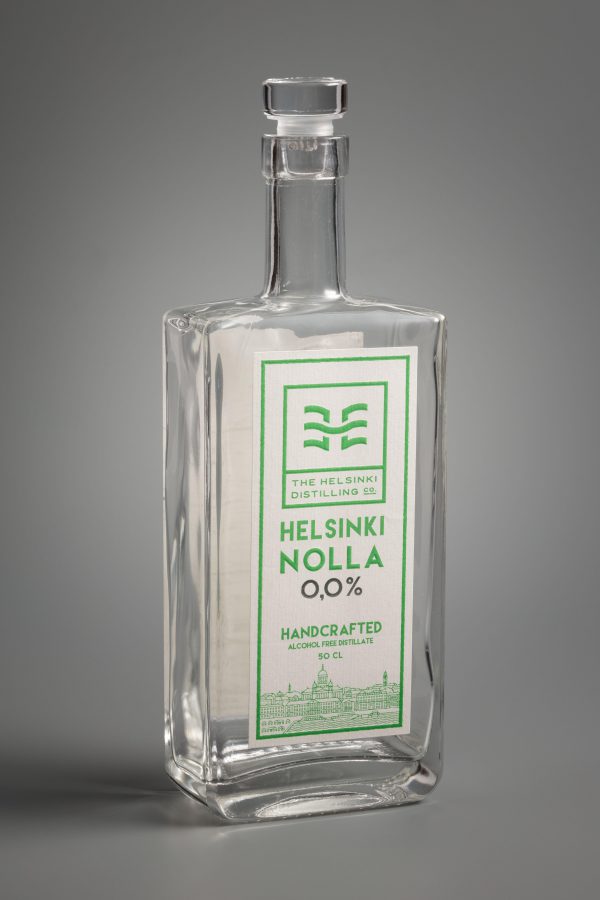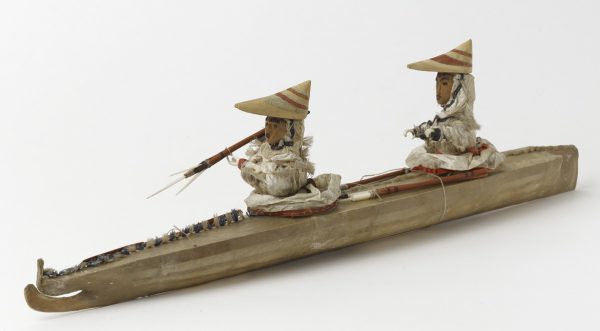Book briefcase of the Finnish Seamen's Service
Artefact of the month - June 2023
History of seamen welfare
Sailors have always been men of mystery, but these sea dogs have also been treated like dogs. A man at sea has been a man not seen by his family or society in general. He has represented freedom and worldliness, a perilous kind of externality and otherness. When at home port, he may have brought with him a touch of exotic fragrances from faraway countries and a world view acquired on the vast sea of the smallness of man in between heaven and earth. From the perspective of the carefully structured social life, the seaman and his experiences may have meant, if not an existential threat, then at least a slight discord in the prevailing world order.
The moral regulation of seafarers has been a great cause of distress for those deeply invested in saving the soul of these poor subjects, perhaps since the dawn of the profession. Meanwhile, the government has not been in any rush to ensure the well-being of seamen or actively develop their social conditions. An important milestone was the establishment of the Seamen’s Houses in 1748. The Finnish Seamen’s Mission, founded in 1875, and the Finnish Association for Sailors’ Homes, whose operations started in 1923, played a significant role in the actual construction of seamen’s welfare and well-being network.
Over time, through international regulation, cultural changes and societal developments, the seafaring profession has become “secularised” as a job like all others, and the government has become increasingly invested in the welfare and well-being of this profession. It has been established that the characteristics of seamen’s job description make it difficult for them to participate equally in social life and leisure activities, so the focus has been on ensuring equal citizenship above all.
In 1960, slightly lagging behind the other Nordic countries, the Social Council of the Merchant Navy was established in Finland, which took care of, among other things, seamen’s sports and ship libraries. In terms of its mission, it can be considered as a precursor to the Finnish Seamen's Service, which was established in 1973 after many turns of events to put in practice the Act on Seamen’s Service and Educational Activities, which entered into force the previous year and was based on a recommendation by the International Labour Organization (ILO) and vigorously promoted by the Finnish Seafarers’ Union. According to the act, the mission of the Finnish Seamen’s Service, or FSS, was to promote and execute the studies, youth and adult education as well as sports, recreational and leisure activities and communication services of professional seamen.
From the outset, the financing of FSS’s activities was based on three pillars: seamen, shipping companies and the State each paying their share. The Board in charge of FSS’s activities and finances includes representatives from the Ministry of Economic Affairs and Employment, the labour market organisations in seafaring and the Finnish Seamen’s Mission. The activities cover seafaring students, seamen and also retired seamen. From the beginning, important activities have included exercise services and sports activities, courses tailored to seamen as well as a ship library and magazine service. Seamen’s get-togethers, organised by FSS, especially help those who have already retired from their active careers to socialise with like-minded people. Throughout its years of operation, FSS has also published the Vapaavahti magazine, which is delivered to all Finnish ships.
Books to ships
As literacy became more common, the hardy Finns adopted literature as part of their leisure activities, including on ships. The ship library operations, a form of service inherited from the Finnish Seamen’s Mission, the Finnish Seafarers’ Union and the Social Council of the Merchant Navy, have become one of FSS’s most important services. Since the 1920s, the previous operators had collected a rather comprehensive literary nest egg and, by the time FSS was founded, the ship library collection comprised approximately 35,000 volumes. The development of the service was fast. In 1974, the selection of books circulating around ships had increased to 42,000 volumes, and 855 ship library exchanges were made during the year. Of particular importance was the extension of the book service to ships carrying out cross-trade shipments between third countries. For these ships sailing the open sea, book packages were delivered in connection with the ship crew replacements and transports of spare parts and provisions.
What has the book briefcase contained over the years? If the share of different religious and devotional literature was striking in the early ship libraries, the selection has, over time and as the operators in charge of the libraries have changed, become secularised and followed the general literary trends. Historical novels, detective stories and other light reading are in demand, but also hobby and non-fiction literature, with special emphasis on the profession. Especially in the early days of FSS, a distinctive feature was the socially conscious material, which was also in line with the trends of that time. Today, films are an essential part of the library service in addition to literature. Modern times have also made it possible to order materials from the library’s website.
FSS’s traditional book briefcase both symbolises and concretises the ship library operations. To seamen, literature has been a link to humanity and society beyond the pier. The exchange of a package containing entertainment and information has become an integral part of equipping a ship for the sea, in the same way as the filling of fuel tanks or the replenishment of provisions. Engine power requires fuel and food is vital, but man does not live on bread alone.
The information and entertainment technology revolution has revolutionised the possibilities of seafarers to communicate, acquire information and enjoy their leisure time. In addition to the traditional way, today’s sailor also listens to audiobooks and reads e-books, but the bound book is still going strong. A book is still seen as a trusted friend, teacher and gateway to other scenery when the sea seems endless and the ship cramped.
Timo Kunttu
Additional information
The Finnish Seamen's Service has been providing its services to seamen for half a century, and it will soon be able to offer a book covering its own history in the book briefcase. The work to be published this year was written by musician and historian Matti Johannes Koivu.
For more information about FSS: https://www.mepa.fi/in_english/






-
2024
-
2023
-
 Book cover
Book cover
-
 Pennies found in Häme Castle
Pennies found in Häme Castle
-
 Ruler received by Aleksis Kivi as a consolation gift
Ruler received by Aleksis Kivi as a consolation gift
-
 Caishen, god of wealth
Caishen, god of wealth
-
 Sober curious phenomenon
Sober curious phenomenon
-
 Summer shoes made of fish leather
Summer shoes made of fish leather
-
 Book briefcase of the Finnish Seamen's Service
Book briefcase of the Finnish Seamen's Service
-
 Nyytinkirukki lace pillow
Nyytinkirukki lace pillow
-
 Arctic vessels and scale models
Arctic vessels and scale models
-
 Portrait of a young dandy: Carl Gustaf Mannerheim
Portrait of a young dandy: Carl Gustaf Mannerheim
-
 Painted Wall Covering in the Devil’s Chamber
Painted Wall Covering in the Devil’s Chamber
-
 Šerkämä – Women’s brooch
Šerkämä – Women’s brooch
-
-
2022
-
2021
-
2020
-
2019
-
2018